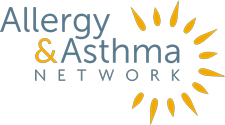
Thunderstorm asthma occurs when grass pollen counts are high and a severe thunderstorm triggers an asthma attack or symptoms of asthma. Recently, a fierce thunderstorm occurred over the city of Melbourne, Australia. It caused what was called a “mass asthma event.” This thunderstorm asthma event resulted in nine deaths caused by asthma attacks. It also led to approximately 8,500 visits to emergency departments.
The severity of these asthma outbreaks highlighted the phenomenon known as “thunderstorm asthma.”
What causes thunderstorm asthma?
Thunderstorm asthma events are rare. They occur when there is a high ground-level concentration of respiratory allergens. These include grass pollen or mold spores.
Thunderstorms are common in many parts of the United States throughout spring and summer months. This correlates to the grass pollen season where pollen counts may be at their highest. Patients with rye grass pollen allergies appear particularly vulnerable.
Often many respiratory allergens are too large to inhale and are stopped by hairs in your nose. However, thunderstorms create a unique set of weather factors. They allow pollen, fungal spores, and other allergens to be more easily breathed in. Hard-driving rain saturates the allergens and separates them into even tinier particles. High humidity causes grass pollen grains to rupture. Then heavy thunderstorm winds disperse these particles into the air. Essentially, the allergens become aerosolized. This creates a perfect storm to trigger an asthma attack.
What are thunderstorm asthma symptoms?
When inhaled by someone with allergic asthma, pollen and fungal spores can inflame airways and cause a sudden flare of asthma symptoms.
- coughing
- wheezing
- chest tightness
- shortness of breath
Even someone with mild allergies may have breathing problems during thunderstorms.
Why is thunderstorm asthma life-threatening?
During a thunderstorm, some people with asthma are unprepared for the sudden onset and severity of symptoms. Respiratory allergens are a known asthma trigger. Yet the aerosolization of those allergens may create a more potent airway response.
With a normal rainstorm, there is often a burst of pollen into the air when wind picks up. But the pollen is so saturated and heavy that it returns to the ground and lies still, causing few issues. But with thunderstorms, winds are much stronger, and pollen stays in the air longer. This increases the risk of breathing in allergens.
Does thunderstorm asthma happen in the United States?
Thunderstorm asthma in the United States is uncommon. Severe cases have been reported in Australia, England, and Italy through the years. There likely have been cases in the United States, just not on the scale seen in Melbourne.
A regional study from Atlanta, Georgia showed a 3% increase in emergency services use by people with asthma following thunderstorms. So, while uncommon, it poses a risk to those living in the United States. It is likely that thunderstorm asthma is more prevalent than currently recognized.
Can climate change be blamed for thunderstorm asthma?
The impact of climate change is an increasing threat to respiratory health globally. This includes the risk posed from thunderstorm asthma. The changing climate will affect the start, duration and potency of pollen allergy seasons. Climate change can also lead to more extreme weather events, including thunderstorms. These thunderstorms may be more intense with heavier rains and stronger winds.
Should face masks be used to prevent symptoms from thunderstorm asthma?
Wearing a face mask when outside during thunderstorms could potentially help you not breathe in pollen and mold spores. However, the role of face masks in reducing thunderstorm asthma and severity has not been studied by researchers. It’s best to stay indoors during and after thunderstorms.
What is thunderstorm asthma treatment?
Follow your Asthma Action Plan regarding use of your quick relief and maintenance medications. Call your doctor or 911 if your symptoms do not respond to treatment.
How can thunderstorm asthma be prevented?
- Get tested. Talk to your doctor and find out if you’re allergic to pollen or mold spores. You may need to undergo a simple skin or blood test to find out for sure. If it’s determined you have a pollen or mold allergy, then appropriate measures can be taken to control allergies. There are avoidance techniques and medications which make allergies manageable. Consider undergoing immunotherapy to better control your pollen or mold allergy and reduce symptoms when exposed to these allergens.
- Take your preventative medications. If you have allergic asthma, make sure to take your preventative allergy medications as directed. This is particularly important before and during grass pollen season.
- Have an updated Asthma Action Plan. This plan will address how to manage your asthma daily and what to do when your asthma symptoms worsen. Make sure to always have your asthma medications on hand. This includes both quick-relief and maintenance inhalers.
- Make sure your asthma is under control. Especially if you have severe asthma, understand that you are more at risk for adverse outcomes. That is why you must work with your healthcare professional to get your asthma under control.
- Stay inside during a thunderstorm. Be sure to keep windows closed. If you are outside during heavy winds, taking a shower and washing your clothes will help remove pollen.
For those with allergies who experience breathing problems during or after thunderstorms, talk with your healthcare provider about the possibility you may have undiagnosed asthma.

 810304 Eaton Place, Suite 100
810304 Eaton Place, Suite 100